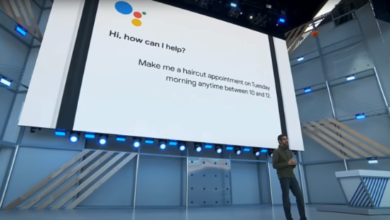
In 2023, we can expect to see brands in the retail space further adopt technology-led marketing strategies to better connect with their target market. An example of this can be seen with the email channel, where global revenue is forecast to double by 2027, according to Statista. However, 2023 will not be without its challenges, as brands will have to work around the reduced purchasing power of their customers, and ensure they are fully compliant with data regulations.
A focus on data privacy
2022 has seen tech giants hit with some of the biggest fines ever seen for data breaches or mishandling consumer data. For example, Meta was fined €405million in September, in what was the second largest GDPR fine ever. For many smaller brands, this will have brought a greater focus on data privacy, the imminent deprecation of third-party cookies, and a shift to first-party data, meaning a redirection of ad spend for more traditional channels such as email.
This is also providing a huge opportunity for big retailers. The shift to first-party data has seen some of them starting to build advertising platforms on top of their own data, putting them in direct competition with the established paid media providers such as Meta and Google. Retailers already have an advantage over the established platforms because they know when consumers have purchased specific products, and when they are likely to do so again, so the timing of replenishment ads become far more accurate.
Zero-party data also has additional benefits for brands, as it provides clear consumer preferences to help tailor content better aligned with their needs. Data accuracy is vital and accurate data drives relevant content, meaning a better chance of increasing sales for the business. This means re-visiting customers on a regular basis, to ensure the data collected is up-to-date and still valid. When zero-party data strategies are executed successfully, organisations will reap the benefits in both the short and long-term.
External influences
Brands have also had to deal with external influences, such as the pandemic. Economic factors, such as inflation and the cost-of-living crisis, will also play a big role in determining marketing tactics in 2023, as consumers cut back on discretionary spending. In fact, according to recent research from KPMG, 61 percent of consumers plan to cut their expenditure in 2023.
Brands will have to adapt to a new type of customer, one who has considerably less purchasing power. They are shifting to necessities, and increasing their purchasing of own-brands. This means read times of emails are decreasing because the range of goods consumers are considering has reduced. The challenge for marketers is finding ways of connecting with consumers while using less space, but still maintaining good accessibility practices. As it is important for brands to empathise with their customers who may be in difficult situations, we can expect to see ‘value statements’, practical advice in emails on how to make money go further, and the resurgence of daily deal programmes, such as Groupon or Wowcher.
The game changer
The genuine game changer to retailers in 2023 is going to be OpenAI’s ChatGPT, a large artificial intelligence model made by OpenAI that has been trained on a massive amount of text data from a variety of sources. Generative AI is already being used by businesses for coding, customer service, and copywriting. Most interestingly, Microsoft is planning on integrating ChatGPT into its Bing search engine, which could pose a huge threat to Google. As marketers become familiar with this capability, the ability to create artificially generated copy is going to see widespread adoption, with massive benefits in terms of time savings and improved productivity. AI-generated images have also become a recent reality, and are going to transform many areas, including marketing and email.
While AI has been used by retailers for some time now, what differs it from anything that has come before is that it passes the ‘Turing test’. This is a test of a machine’s ability to exhibit intelligent behaviour equivalent to, or indistinguishable from, that of a human. We have already seen numerous examples where readers have been asked to guess which piece of text was written by the machine, and were unable to do so.
Looking even further into the future, AI is proving it can complete creative tasks at a higher level, and because of this we can expect jobs to evolve in the coming years. Understandably, there is an immediate fear that thousands of people will be replaced with AI, but these new developments will only create new jobs in the coming years. For example, one can imagine an entire industry will come into being focused on the optimisation of queries that are submitted to ChatGPT to ensure they provide the best answers.
As the cost-of-living crisis continues, regulatory bodies come down harder on businesses, and we see new innovations such as ChatGPT becoming a core tool used by retailers, businesses will have to adapt their marketing methods to maintain good relationships with their customers in 2023.




